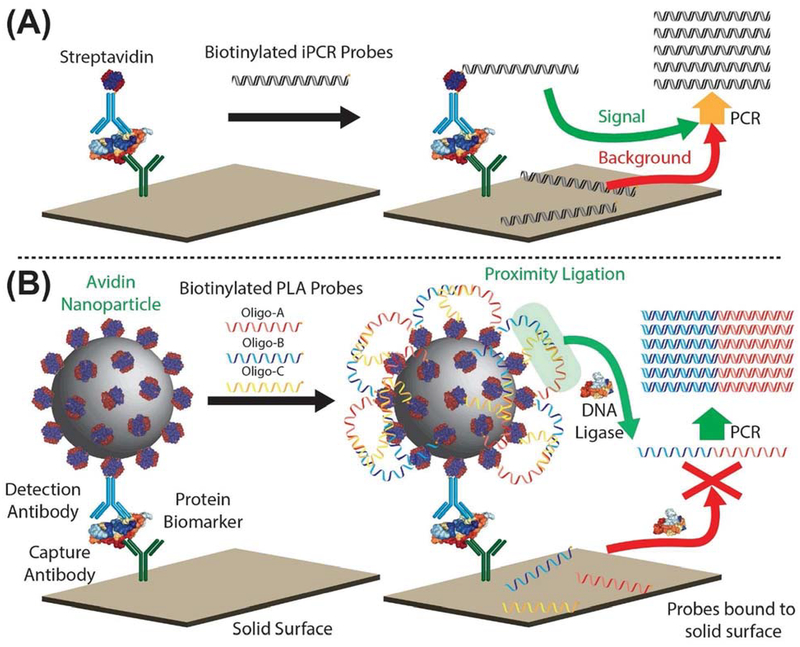Figure 1.
Schematic of nanoparticle-based proximity ligation assay (NP-PLA). (A) In traditional immuno-PCR (iPCR), a PCR-amplifiable template oligo is directly used as the reporter. Non-specifically bound oligos are PCR amplifiable, resulting in nonspecific background signal. (B) In NP-PLA, avidin-coated nanoparticles serve as reporters. The avidin nanoparticles bring the two split parts (biotinylated oligo-A and biotinylated oligo-B) of the PCR template and the biotinylated bridge oligo-C into proximity. Oligo-A and oligo-B are then ligated, with the resulting oligomer serving as the PCR template. Any non-specifically bound oligos in NP-PLA cannot be ligated into a PCR-amplifiable template, and nonspecific background is significantly decreased.

